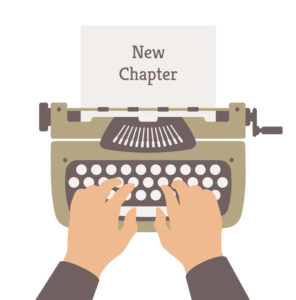By Dr. Ken Broda Bahm:

Lawyers tend to think of opening statement as the time for stories. But I think you’re telling a story in closing argument as well: not the same story, but a different one. And I don’t mean you should change the facts or present new evidence — a confused jury would be the least of your troubles. I mean you are no longer telling the story about what happened between the parties that led them to court. Instead, you are telling a new story about what is about to happen to the jurors: their deliberation and decision. Jurors don’t need the trial story again — at this point, it isn’t novel, and closing should not be treated as “Opening 2.0.” Attorneys also should not just rest on the old chestnut that jurors have already made up their minds. For one, it isn’t true (research to back up the folklore that “80 percent of jurors make up their minds in opening” does not exist). And in addition, even those who have developed a solid leaning will need to be prepared to argue. The closing should empower and arm your supporters, and disempower and disarm your opponents.
So the closing is critical. Jurors do need guidance for this new part of the trial. And the effective closing argument presenter helps to lay out that role for them by taking them through what should happen as they sift through the evidence and make their way toward a decision. Instead of downplaying the importance of closing, attorneys should be focused on that as the time to make their case: a time when their advocacy skills should be at their peak. But that doesn’t mean just offering logical arguments about the correct decision. Instead, it should be a story about how they get to that correct decision. In this post, I will discuss a few narrative elements that should go into that.
The Setting: Frame the Decision and the Process
The story starts with a setting which, in this case, means a context or a “frame” for the decision. If jurors’ upcoming route through the evidence to a decision is a journey, what kind of journey is it? The law sees it in narrow terms. They are following legal instructions, reviewing evidence, and finding the facts of the case. But beyond that process, what are they after? What is it all for? For example, are they solving a mystery that lies at the heart of the evidence? Are they reinforcing a sacred moral principle like justice or equality? Are they deciding who deserves credibility or vindication? Are they deciding what steps society should take to protect itself? Ultimately, you want to identify an overall principle that justifies the action that you want jurors to take.
The Plot: Walk the Jurors Down the Path
The plot in the closing narrative involves the questions the jurors will need to ask and answer. The presenting attorney’s role is to guide them through that field. For example,
Your first step will be to decide what the contract means. And you’re going to want to look at the behaviors of the parties, and see what their actions say about their understanding at the time…. Then you’ll want to decide whether the defendant followed that meaning of the contract, paying close attention to the timeline…. Finally, you will ask yourselves how my client was harmed by that….
What makes it a story is the sequence. What makes the story effective is the extent to which it empowers the jurors. If you’re not just telling them what they should decide, you are telling them how they get to their decision, they will feel more comfortable.
The Twists: Help Jurors Get Past the Obstacles and Leverage the Opportunities
Attorneys, and advocates generally, have a tendency to play to their strengths. But along the path jurors take to your preferred verdict, there will be some obstacles. Closing argument is an ideal time to confront those obstacles and to give your own supportive jurors a way to navigate their way past them. When a skeptical juror brings up, for example, that your client signed a release, what is the response? The weaknesses are the way you will lose, so you should put as much emphasis on them as you place on strengths, or more emphasis. You obviously want to push the strengths as well, not just so jurors will be convinced, but also so favorable jurors can use them against skeptical or wavering jurors during deliberations.
The Resolution: Motivate the Action to be Taken
The ultimate climax of the story, of course, is when the foreperson is reaching for the verdict form and filling it out in your favor. Many attorneys like to fill out that verdict form using an Elmo or a large printed board at the end of closing, and that is a good practice. Looking at mock trial experience, you would be surprised at the number of times jurors want to help one side, but aren’t sure whether helping that side means answering “Yes” or “No” on a particular question. But beyond making sure that they know the mechanics of how to mark the verdict form, you should also address the motivation: What action are jurors taking by finding in your favor? They’re following the law and the judge’s instructions, and they’re making findings of facts on the verdict form, but more broadly, what are they accomplishing through this verdict? Whether you are asking for a plaintiff’s verdict or a defense verdict, be clear about this: What you’re asking the jury to do is to do justice. The closing argument is the ‘story at the end of the story’ that gets them there.
Other Posts on Closing Argument:
- Remember That Argument Isn’t The Most Important Part of Closing
- No Blank Slate (Part 2): In Closing, Treat Your Jurors as Instrumental Arguers
- Rebuttal: End With Your “Untouchables”